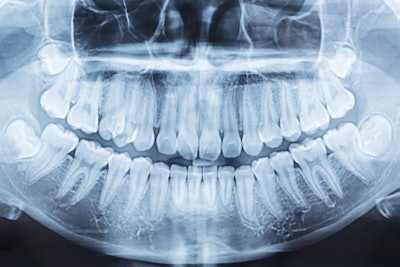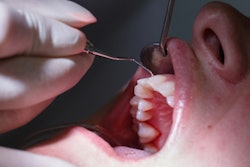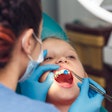
Men with HIV may experience greater alveolar bone loss than those without HIV, potentially due to higher levels of the proinflammatory cytokine interleukin 6 (IL-6). This research was recently published in BMC Oral Health.
Furthermore, elevated IL-6 levels in men with HIV may contribute to alveolar trabecular bone deterioration, leading to bone loss, the authors wrote.
"These findings emphasize the importance of comprehensive oral health assessment and management in people living with HIV (PLWH), particularly in understanding the underlying mechanisms contributing to periodontal disease progression," wrote the authors, led by Dr. Michelle Skelton of the Columbia University College of Dental Medicine (BMC Oral Health, October 19, 2024, Vol. 24, 1248).
The study recruited 93 men with an average age of approximately 52 from Columbia University Irving Medical Center clinics between October 2018 and December 2023. Among the participants, 50 had HIV and 43 did not. Periodontal exams, gingival crevicular fluid (GCF) samples, and intraoral radiographs were collected. Statistical analysis involved t-tests for continuous variables and chi-squared tests for categorical variables, they wrote.
The primary outcome of the research was to assess changes in alveolar crestal height (ACH), with a focus on the mandibular bone microarchitecture. ACH was measured on posterior bitewing and anterior periapical radiographs by blinded investigators at mesial and distal sites on up to 24 teeth, excluding third molars and canines.
No significant differences were found between men with or without HIV in probing depth, bleeding on probing, clinical attachment loss, or the number of teeth present. However, two-dimensional intraoral radiographs showed that mean ACH was higher in men with HIV (HIV +, 3.41±1.35 mm; HIV-, 2.64±1.01 mm; p = 0.004), indicating greater alveolar bone loss in men with HIV, according to the results.
There was a nonsignificant trend toward higher GCF IL-6 levels in men with HIV compared to those without (p = 0.059). Although not statistically significant, this finding suggests that IL-6 may play a role in the pathophysiology of periodontitis, and elevated IL-6 levels in HIV could contribute to alveolar bone deterioration in PLWH, the authors wrote.
However, the study had limitations. The study's small sample size limits its ability to generalize findings to other populations of PLWH, they added.
"Further research is warranted to understand the interplay between HIV infection, cytokine dysregulation, and periodontal health, with the ultimate goal of developing targeted interventions to mitigate oral health disparities in this population," Skelton and colleagues concluded.




















